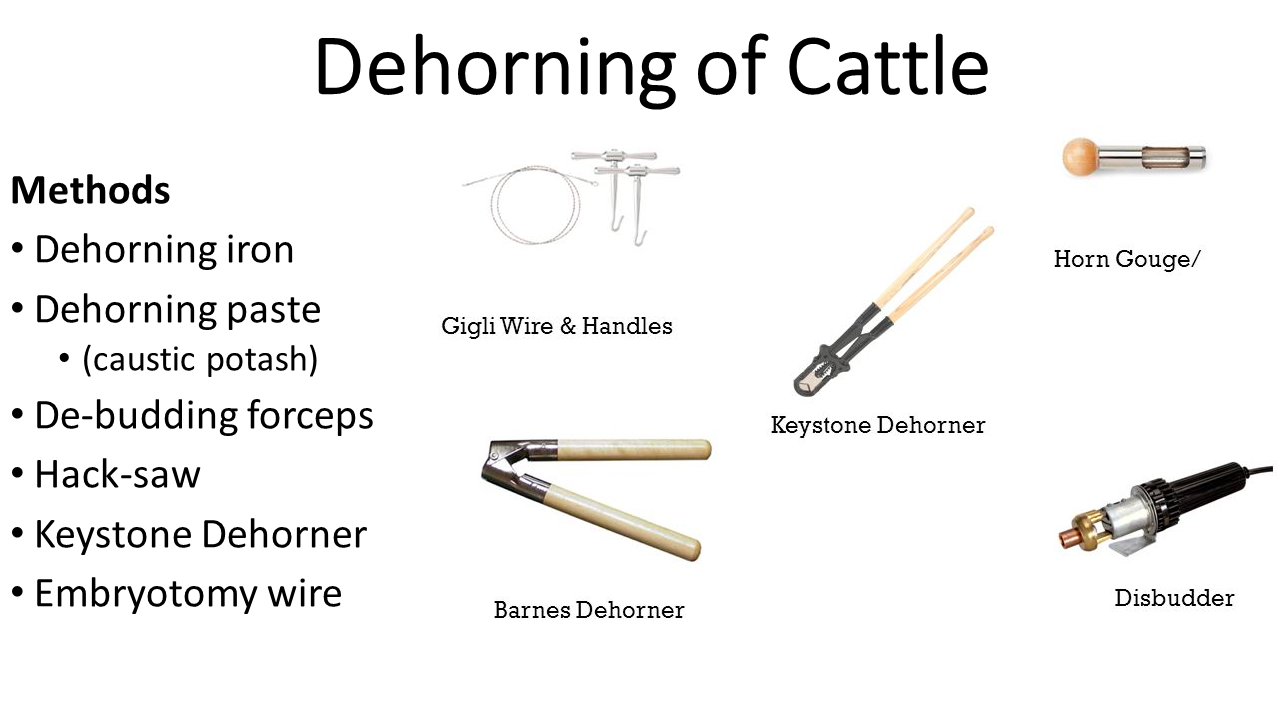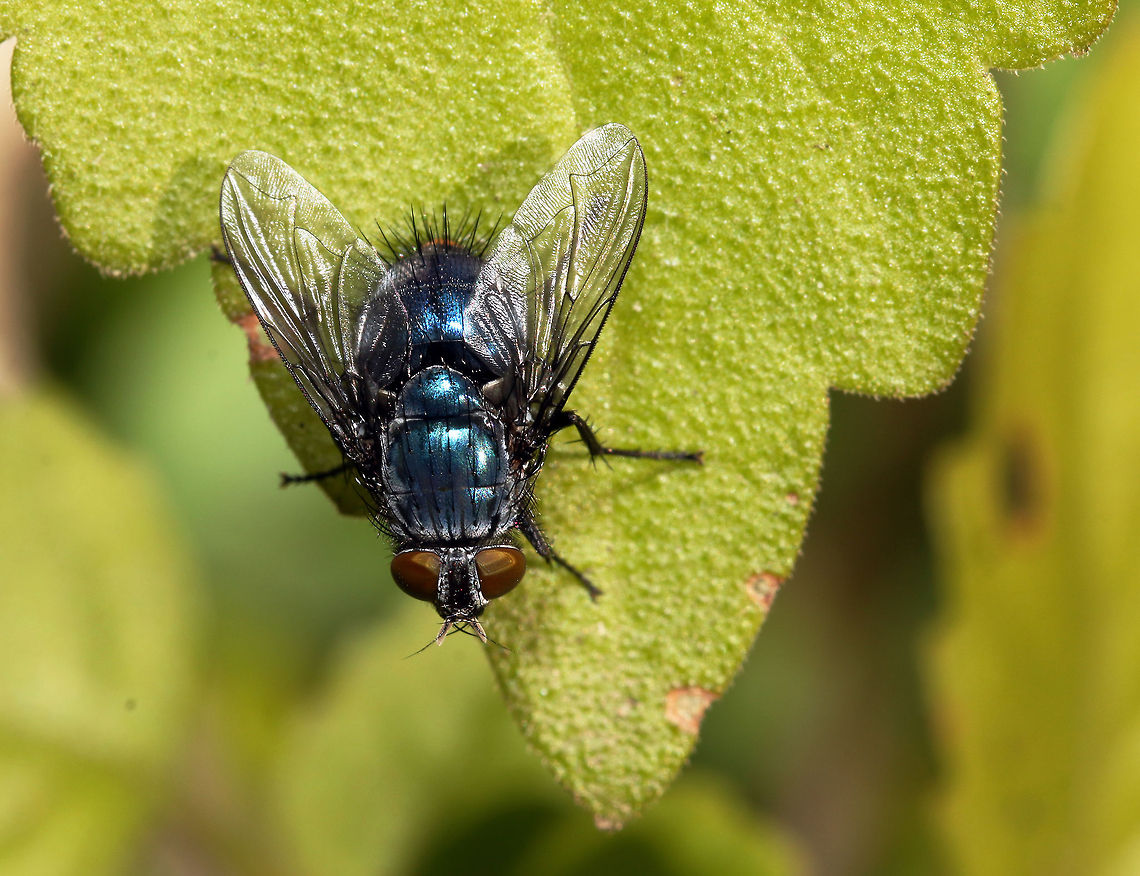There is more than one method to dehorn animals such as cattle, sheep and goats. Some of these methods can easily be performed while the others may be done under local anaesthesia and must preferably be done by a veterinary surgeon.
Certain Objections can Also be Lodged Against It
Horns are useful when catching and securing animals: (Halters and head clamps can, however, be used with success). Horns are indicative of the quality of the animal. (The skin, bone and hooves can also judge Quality).
Dehorning of Cattle
The dehorning of cattle is recommended for various reasons, namely; polled animals cannot injure each other, especially in kraals, at dipping-tanks, at drinking and feeding troughs and in railway trucks. Losses due to wounds and bruises inflicted by sharp horns are avoided. Bruised meat on carcasses, usually acquired by horn blows during transport, are condemned for human consumption at abattoirs daily, leading to losses amounting to thousands of Rand annually.
Click here to view a video that explains cattle dehorning.

Various methods and apparatus can be used for the dehorning of cattle. It is, however, preferable to have cattle dehorned as calves. The most suitable age is from 2 - 4 weeks, or as soon as the horn bud is palpable. When the horn is well developed, the lumen of the horn is connected to the frontal sinus, which makes the process of dehorning a painful operation, and the risk of complications is greatly enhanced. Because of this the dehorning of mature cattle is not recommended, except in exceptional circumstances. A veterinarian should then do it under local anaesthesia.
Dehorning Iron
Cast the calf and cut off the hair around the horn bud and make sure that the iron fits over the horn bud. (The tip of the iron is concave). If necessary, the tip of the horn bud may be cut off with a sharp knife to ensure that the growth area around the horn bud is burnt. Heat the iron until it is red-hot. Now press it down on each bud for about 6 seconds. No after treatment is necessary. Care must however be taken to ensure that the skin around the bud is well burnt thus preventing the growth of a malformed horn.
Dehorning Paste (caustic potash)
Cut off the hair around the horn bud and smear petroleum jelly around the base of the bud. The dehorning paste is then rubbed in well on the horn bud for 15 - 20 seconds. Ensure that the calf does not get wet or that the paste does not run down its face as the skin may be burnt and the eyes or ears damaged.
De-budding Forceps
This can be used for calves up to 4 months of age. Cut off the hair and paint the horn bud and the surrounding area with a germicidal agent e.g. tincture of iodine. Place the jaws of the forceps around the horn bud and close the forceps. It must be deeply recessed. Do not feel sorry for the calf, as the operation may then be unsuccessful. Paint the wound with tincture of iodine, healing oil, etc.
Hack-saw
This is used when horns are fully grown and should be done under local anaesthesia. Mature cattle should be well-controlled, and the head must be securely held. It is often necessary to cast the animal for this operation. The horn can then be neatly sawn off jointly with a ±1 cm ring of surrounding skin. It can be done in a short time by an experienced person. If the frontal sinus is exposed, the hole should be plugged with cotton wool and painted over with Stockholm tar.
Keystone Dehorner
Large, heavy forceps with compound hinges. This is a quick method, but two people or at least one strong person is necessary to handle it. Cracking of the skull and serious haemorrhage are often complications with this method. This should be done under local anaesthesia and the head of the animal firmly secured. If bleeding is profuse, a thin rope should be tied around the base of the horns in a figure 8 to stop the bleeding. After-treatment with cotton wool and Stockholm tar as described above.
Embryotomy Wire
This cable-like wire is drawn to and fro around the base of the horns, thus sawing off the horn and generating heat. This should also be done under local anaesthesia. Bleeding is limited when using this method. After-treatment is the same as above.
Complications
Haemorrhage: Can be controlled by means of a rope tied around the base of the horns in a figure 8 or by cauterisation with a branding iron.
Infection: Local antibiotic treatment after disinfection of the wound.
Sinusitis: Infection of the sinus cavities. "Boil" out the pus with proteolytic enzymes or hydrogen peroxide and treat with antibiotics afterwards. The pus can quite often be "poured" out by tilting the head of the animal.
Abscesses: Disinfection and antibiotic treatment.
Cracking of the skull: Rest and prevent infection.
Blowfly: Clean the wound and treat for blowfly.

Sheep- and goat rams may sometimes also be dehorned. If done as lambs, the same methods as for calves can be used. If a mature ram is to be dehorned, it is advisable to have it done by a veterinarian who would most probably use the embryotomy wire method.
